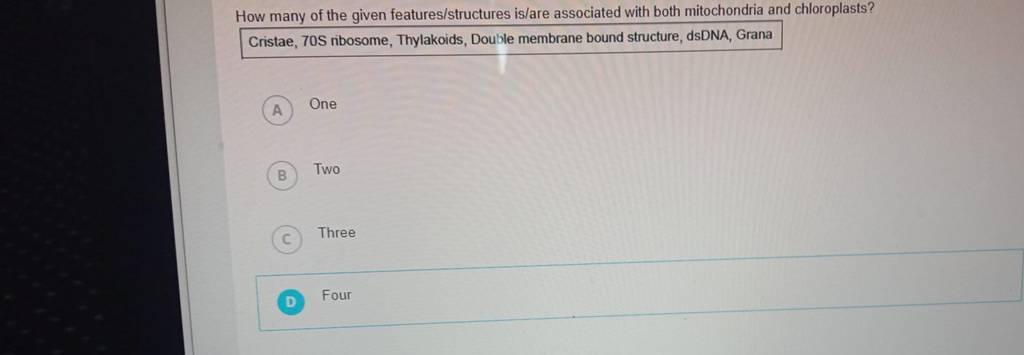Question
Question asked by Filo student

How many of the given features/structures is/are associated with both mitochondria and chloroplasts? Cristae, 70 S ribosome, Thylakoids, Double membrane bound structure, dsDNA, Grana
- One
- Two
Found 6 tutors discussing this question
Discuss this question LIVE
11 mins ago

One destination to cover all your homework and assignment needs
Learn Practice Revision Succeed

Instant 1:1 help, 24x7
60, 000+ Expert tutors

Textbook solutions
Big idea maths, McGraw-Hill Education etc

Essay review
Get expert feedback on your essay

Schedule classes
High dosage tutoring from Dedicated 3 experts
Practice more questions on Human Physiology
Question 2
Medium
Views: 5,790
Students who ask this question also asked
Question 1
Views: 5,471
Question 3
Views: 5,947
Question 4
Views: 5,732


Stuck on the question or explanation?
Connect with our Biology tutors online and get step by step solution of this question.
231 students are taking LIVE classes
| Question Text | How many of the given features/structures is/are associated with both mitochondria and chloroplasts? Cristae, 70 S ribosome, Thylakoids, Double membrane bound structure, dsDNA, Grana |
| Updated On | Aug 7, 2022 |
| Topic | Human Physiology |
| Subject | Biology |
| Class | Class 11 |
| Answer Type | Video solution: 1 |
| Upvotes | 105 |
| Avg. Video Duration | 1 min |



